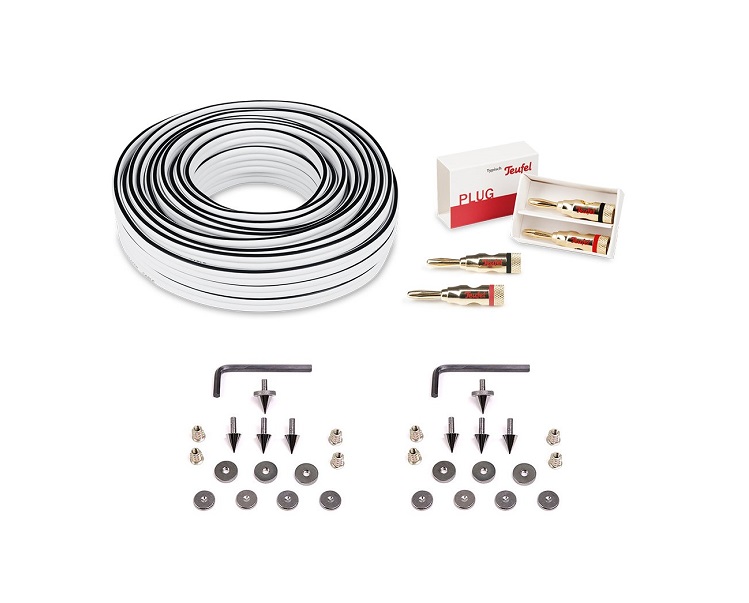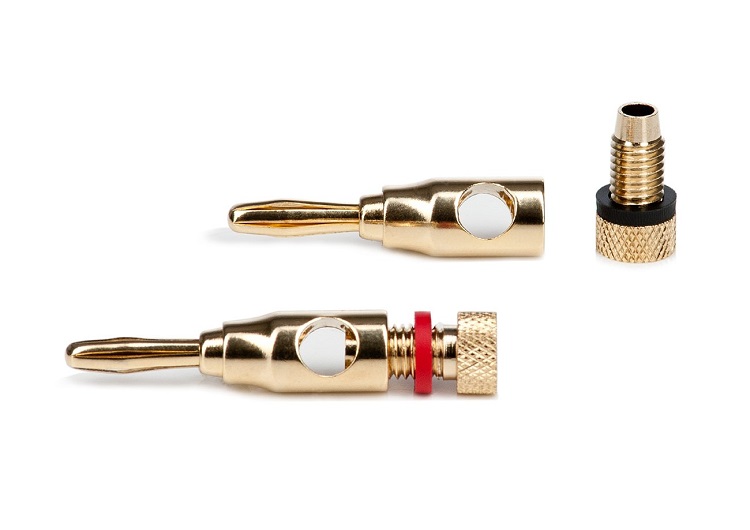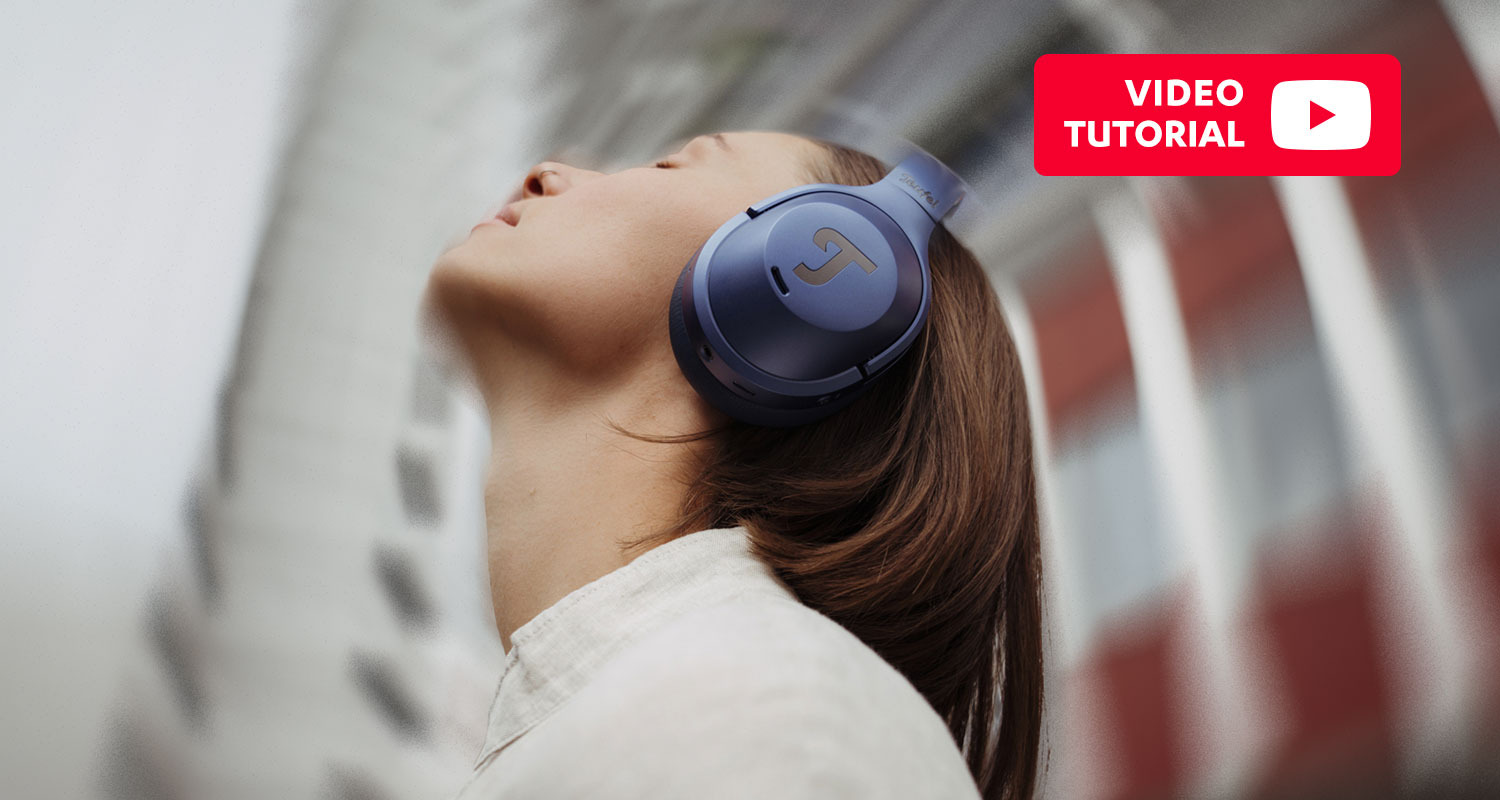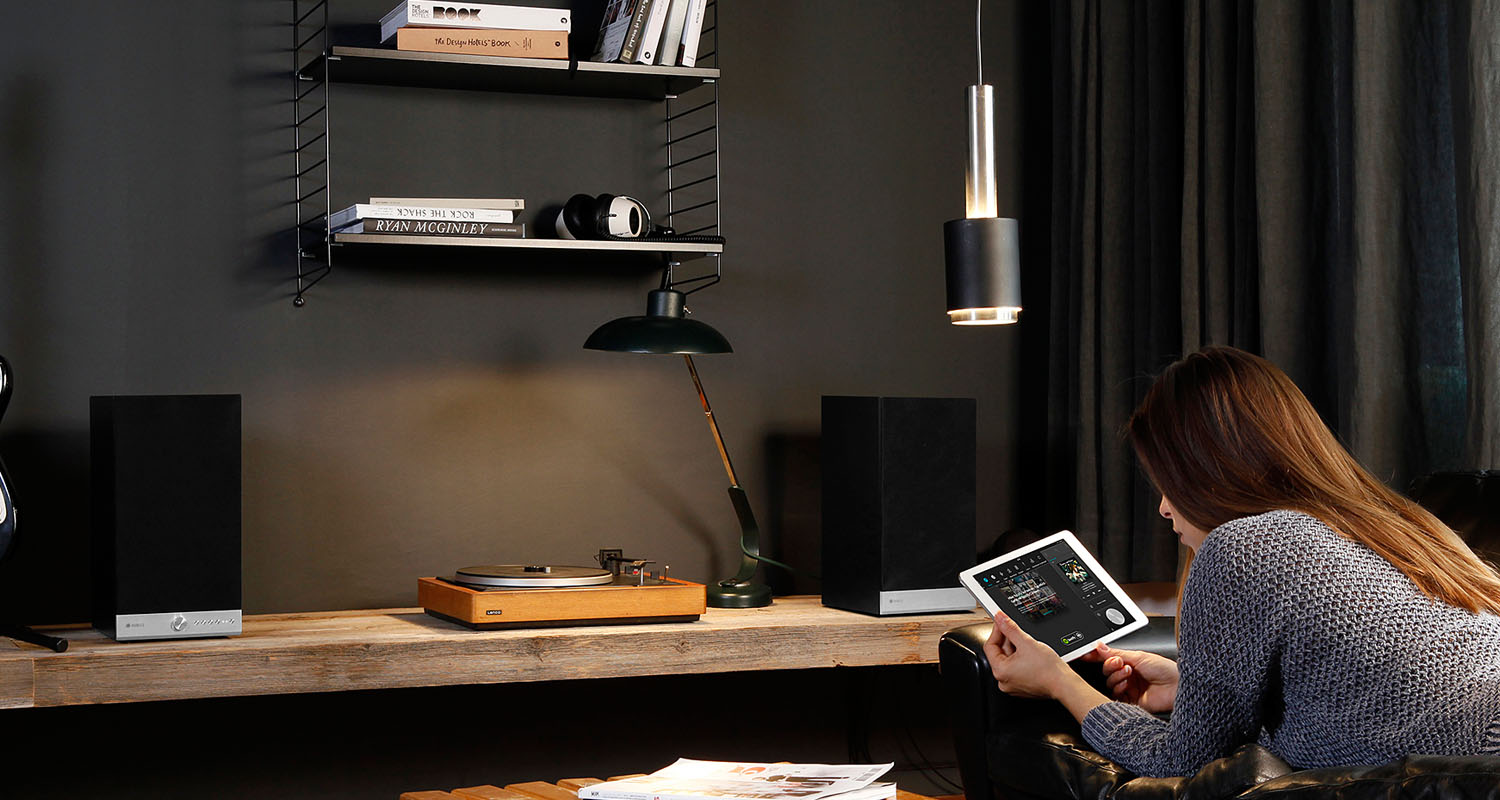Now let’s just connect the speaker cables… cables, whether we like it or not, are a vital part of the listening experience – but that doesn’t make them any fun to work with. Trying to figure out which port is for what on the backside of a receiver is important, but challenging. When setting up a stereo system you need to be a little comfortable working with wires. However, if you take the time to learn it properly it isn’t always an impossible task. And a bit of aid can’t go a miss when connecting speaker cables.
The basics of loudspeaker cables
Each hi-fi system is setup with each loudspeaker having their own electronic signal. That signal runs from each loudspeaker through a cable to receiver, such as an amplifier. With a 5.1 system that is 6 cables, by a 7.1 system that’s 8. The subwoofer is often connected via Mono-cinch cable. The remaining loudspeakers, on the other hand, are equipped with two-core stereo cables; two copper wires (strands) each transmit the audio signal from the receiver to the box. The strand is made of many thin copper threads. The cable is coated with plastic, only the strand ends are free, the power should finally flow.

How to determine the correct cable cross section
The choice of the right cross section, whether stereo speakers or home cinema system, is often underestimated. Loudspeaker cables in modern living rooms have to take on more than just a technical function and the demands on the cables are changing. The cables often have to be invisible or basically fit to the other equipment and on the other hand they have to be able to transmit the sound signal perfectly.
In order to determine the suitable cross-section, it is physically to be assumed that a certain signal loss occurs per cable metre. On the other hand, with cable lengths of up to 10 meters, this loss is actually inaudible, especially in living room home cinema systems with an amplifier output power of up to 80 watts. Of course, the cable should also fit into the connections of the satellites or speakers. On the product pages you can find out up to which speaker cable cross section the satellites are designed.
Common cross-section sizes are: 0.75 mm², 1.5 mm², 2.5 mm², 4 mm² and 6 mm².
✔ Tip: The shorter the transmission path, the higher the possible volume. Now short cable runs are not always possible, especially with home cinema systems. For transmission distances of over 7 m it is therefore recommended to use a loudspeaker cable with a 2.5 mm2 cross-section. Otherwise the maximum volume could literally remain on the plug.
Teufel loudspeaker cables
[product id=”26965,26969,28233″]
Using Bananan plugs and cable lugs for connecting loudspeaker cables
Sometimes the individual wires of the copper strands are uneasy. For example, they can protrude and bend. In addition, the appearance of loosely attached strands is not everyone’s cup of tea. So-called cable lugs and banana plugs are the most common aids.
Cable lugs: These are attachments into which the strand ends are inserted before they are fixed with screw clamps or grub screws. The end of the cable lug is flattened, it is clamped in the same way as the strands in the screw cap at the box outlet of the receiver. The diameters of sleeve and cable must match.
✔ Tip: With the cable lugs, there is a high probability that the screw cap will loosen after a certain time. Check from time to time whether the cable lugs are still tight.

Banana plugs: Banana plugs are connected according to a slightly different procedure than cable lugs and strands. They are not clamped by means of a screw cap, but plugged into the receiver or amplifier outputs. To be able to connect the speaker cable, a type of plug or protective cap must be removed from the output of new receivers. How the banana plugs are fixed to the speaker cable depends on their design. The following YouTube video shows how it works:
Step-by-step guide of connecting speaker cables
- First of all, stand your speakers and receivers up. It will be easier to add the cables when their is clear access to all ports.
- If possible, speaker cables should be routed from the speakers to the receiver in such a way that they do not interfere and do not become tripping hazards.
- Screw the screw caps on the receiver output back so far that there is a gap. A stripped cable end is clamped into each of them.
- Thread the stripped wire ends so that no wires protrude.
- It is easy for you to see to which outputs you have to connect the speaker cables, because the sockets are labeled very precisely: For example, the speakers on the right side must be connected to the “Speaker right” output.
- Be careful not to reverse the polarity of the speaker cables. The cable core, which is connected to the positive pole of the speaker, must also run to the positive pole of the receiver. The cables are colour-coded for orientation. If the polarity is reversed, the bass will swing inwards, not outwards. This is bad for the sound. However, this does not affect your loudspeakers.
✔ TIP: Normally, the shorter the travel distance, the louder the speaker. Sadly, short cable paths are not always likely, espically in home cinema setups. When the travel distance is over 7 meters it is suggestable to use a stereo cable with 4 mm2 quick cut. Otherwise, you might never hear your setups’ full potential.
Teufel connects
In our online shop we offer loudspeaker cables with various lengths and sizes. Our high-end plug “Referece” comes with: banana, pin and lug cables. The casing of the extras is gilded and therefore is protected against corrosion.
The following products could interest you:
[product id=”27912,27908,27916″]
Conclusion: Hand work, that’s worth it
- A loudspeaker cable in the Hi-Fi range usually consists of two copper wires (strands).
- Subwoofers are connected separately via a Cinch cable (mono) (to “Sub out”).
- Stripped speaker cables are attached to the receiver outputs via screw terminals. It is important that no copper wires protrude or bend.
- Alternatively, you can connect the speaker cables using banana plugs or cable lugs.
Header image: ©WerbeFabrik certrain copyright applies. Source: Pixabay
Image1: ©WerbeFabrik certain copyright applies. Source: Pixabay





3 responses to “Connecting speaker cables: Guide on how to setup your sound system”
Er, how does a speaker send signal to an amplifier?
The amplifier should receive signal from a playback device, I.e. Tv receiver, DVD player, gaming console etc and then amplifies and transmits said signal to the speakers.
Hey Romario!
Thanks for your comment. To answer your question – it doesn’t send a signal! It’s an error in the text. Thanks for highlighting the typo.
Hello,
As I’m fascinated by the dictionary of the person in charge for translations into English please allow me to note that this article as fascinating is, is full of technical issues (in the first paragraph is written that audio signal travels from loudspeaker to amplifier and such) and also quite over complicated…